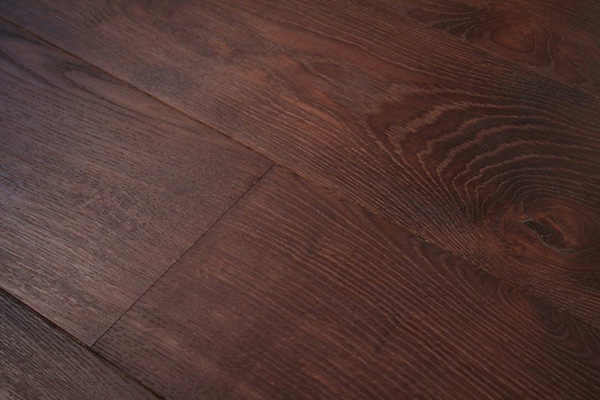Guest Post: Wood and Beyond
I have a guest blogger today! Meet Wood and Beyond. They are importers and specialist suppliers of high quality hardwood products ranging from solid hardwood floors, engineered hardwood floors to decking boards and wooden worktops.
Hardwood Flooring Options and Styles
If you are considering hardwood floors, you will soon discover that choice is abundant but often confusing. In this blog post, we aim to explain your options together with some examples of recent trends in color technology.
Hardwood Flooring Types – Solid Vs. Engineered
Most individuals are unaware that hardwood flooring is available in two construction types. The first decision is to select the most appropriate type for your interior.

Solid Hardwood
Solid Hardwood – Often called ‘real hardwood flooring’, the solid hardwood floorboards are made using complete 100% hardwood from species such as Ash, Pine, Oak, Walnut and other broadleaved trees. This solid construction makes the floor extremely strong and very popular in both commercial and residential settings. It lends itself nicely to most areas of the interior, but to wet and humid areas such as the bathroom, these conditions can cause the hardwood to expand.
Engineered Hardwood – Contrary to solid hardwood, this time, the floorboards are made from MDF, Plywood and hardwood veneer. The first external layer is made from solid hardwood and it is called the hardwood veneer layer. Below this layer and away from view, you will find layers of man-made materials such as medium-density fiberboard, ply and even softwood.

Engineered Hardwood
The engineered hardwood varied construction means that you can safely fit it across the entire interior, even in humid areas (for example, the kitchen, the bathroom and basement areas) and mostly remarkable for hardwood flooring, even on top or under floor heating.
Hardwood Flooring Grade – Prime Vs. Select Vs. Rustic
The hardwood flooring grade will determine the decorative side of the floorboards in terms of natural features. Higher grades feature less sapwood, knots and will closely match in terms of color, while basic grades will display more telltale signs of natural wood.

Prime
Prime grade – The prime hardwood floorboard will display minimal color variation and minimal small knots. Prime is the highest grade of hardwood flooring and also the most expensive option. In interiors where the hardwood flooring should present a consistent look, prime is the obvious choice

Select
Select grade – Floorboards of the select grade will display the odd infrequent knots, color variations to a degree and minimal streaking. The select grade can suit a whole host of interiors, both contemporary or traditional.
Rustic grade – Each floorboard will display heavy grain markings and figuring, frequent color variations and frequent knots of varying sizes. The rustic grade is considered full of character and strong features of wood, you either love it or hate it.

Rustic
Hardwood Flooring Finish
The last consideration is the finish of the hardwood floorboard. In the past, the job of this clear chemical layer was mostly functional in order to reduce damage to the floorboards. Incorrect cleaning (commonly too much water), dragging heavy objects across and even contact with abrasive shoe soles can damage the floorboards unless an oil or lacquered based finish is applied.
In recent years, the finish has also been used to color the floorboard and to match it against a specific color. Here are a few examples of a few color choices for wood flooring. You are no longer limited to just a brown or honey hardwood floor board color.





If you have any questions, leave your comments below.
Article written by Wood and Beyond for DGR Interior Design blog.


Sorry, the comment form is closed at this time.